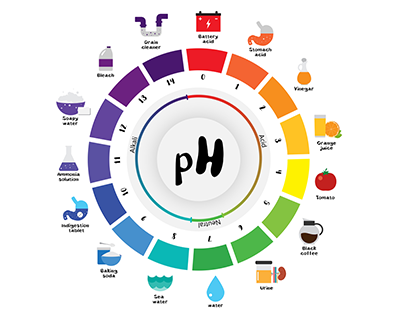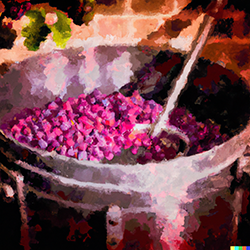Checking your PH before Fermenting? You Should!
Posted by Matteo Lahm on 10th Jan 2023
If you think you’ve taken every precaution, yet you are still getting stuck fermentation and/or spoilage, your problem is probably low acidity. Unlike sugar measurement, acidity is often overlooked. Most home winemakers get introduced to testing for sugars right off the bat. Hydrometers are inexpensive and easy to use. Testing for pH however is a bit more involved and can be intimidating. Reading pH is not as straightforward as sugars however, scary or not, if you are serious about making good wine, this is a mountain you must climb. Most importantly, you must adjust your pH before pitching your yeast.
In the end, proper acidity is every bit as important as the right amount of sugar and if your juice is outside the optimal range, you are almost guaranteed to have difficulties and undesirable results. Unless you are working with wine kits or fruit bases which come with acidity already adjusted, you most certainly want to learn how to measure and adjust pH.
Before even discussing what high pH environments actually do to your yeast, let’s talk about the pH scale and how to interpret it. First, the lower the number, the higher the acidity. Fruits that can be used for making wine include grapes, apples, blueberries, cherries, cranberries, pears, peaches, plums and raspberries. The pH of these fruits varies, but generally ranges from 3.2 to 4.0. If you have never studied pH, these numbers mean absolutely nothing so let’s dive in further.

The pH scale is 0-14. 7 is neutral. A good example of neutral pH is distilled water. Solutions with pH below 7 are acidic and above 7 are basic. Though acids and bases are technically opposites, they have very similar dangers at the ends of the spectrum. Sodium hydroxide is a base with a pH of 14 and Battery acid has a pH of 0. Both can cause severe burns to skin and eyes and are not too different than the blood of Alien that burned through the floor of the spaceship.
So if a pH of 0 can burn off your limbs and dissolve metals, how do you visualize the differences in the amount of acids in fruits? The pH scale works by measuring the concentration of hydrogen ions in a solution. The lower the concentration of hydrogen ions, the higher the pH and the more alkaline the solution. Conversely, the higher the concentration of hydrogen ions, the lower the pH and the more acidic the solution.
The pH scale is logarithmic, meaning that each unit on the scale is 10 times greater than the previous one. For example, a pH of 5 is 10 times more acidic than a pH of 6, and a pH of 4 is 100 times more acidic than a pH of 6. The difference between a pH of 3.6 and 3.4 much bigger than you think. 3.4 is 10 times more acidic than a pH of 3.6! So, when your fruit measures 3.7, you now know just how much less acidic that is than a 3.4.
Now let’s discuss what happens to your yeast in lower acid environments. Yeast can struggle to complete fermentation because it needs a certain level of acidity in order to thrive and convert the sugars into alcohol. If the environment is too low in acidity, the yeast will become stressed and may not complete fermentation, resulting in a sweet, low-alcohol wine. Additionally, a low-acid environment can create the ideal conditions for bacterial growth, resulting in off-flavors, cloudiness and even spoilage.
Acid blend can help to balance the low acidity and create a more optimal environment for the yeast to thrive. Acid blend is a blend of tartaric, malic, and citric acids that is added to the must to raise the overall acidity. This will give the yeast the ideal environment to complete fermentation and create a balanced, stable wine.

Adding acid blend can be tricky. You need to take measurements and add acid blend with caution. Putting acid in is easy, getting it out is not. There are inexpensive methods like test strips and paper to measure pH but these work better with clear and low pigment fruits. With darker pigments, it gets more difficult because these methods involve color coded results, and the pigments tint the strips making them harder to read.
Another much more reliable method is the trusty pH meter. There are an array to choose from that will fit your budget. Once you get beyond the learning curve of calibrating them before use, there is no better way to test the pH of your juice.
The ideal pH for wine is between 3.2 and 3.5. This is a three-fold advantage. This range facilitates optimum fermentation, protection against bacteria and is the most flavorful to drink. Wines that are above 3.5 are flabby. Acidity is the backbone of your flavor profile and wines that lack it are boring. With dry wines, whites are a bit more on the acidic side than reds. Sweet and semisweet wines should also be in the higher acidity range to balance out the sugars when back sweetening.
Just to clarify how much this matters for spoilage, even sulfites will not protect against bacteria if the pH is too high. Sulfites are used to inhibit bacterial growth; however, they are not very effective in environments with a pH higher than 3.5. Therefore, it is important to maintain a proper pH level to ensure all yeast and bacteria can be controlled during fermentation. When yeast become stressed, they produce off-flavors, such as sulfur and volatile acidity, which can affect the aroma and taste of the wine.
The recommended dose of acid blend to correct the pH for wine is between 0.2 and 0.5 g/L, depending on the desired level of acidity. It is important to add the acid blend slowly and to carefully monitor the pH level to ensure it does not become too acidic. Also, since pH is dynamic, you will need more acid blend to get from 3.4 to 3.3 than you will from 3.5 to 3.4. A great technique is to dissolve acid blend powder in a small amount of heated distilled water. This will help you mix it and more quickly get accurate readings. Keep adding it incrementally and continue testing until you reach the desired pH. Once you master the techniques of measuring and adjusting acidity, your wine will become much more consistent and your results more reliable.
So there you have it! Acidity is not only a major component of the harmony of your wine, it is critical that you adjust it before you ferment. Think of your juice like a symohony with your yeast as the conductor. If the instruments are not in tune, you'll end up with a mess. Tune your acids correctly and your yeast will make beautiful wine. Good luck!

